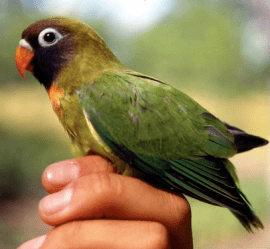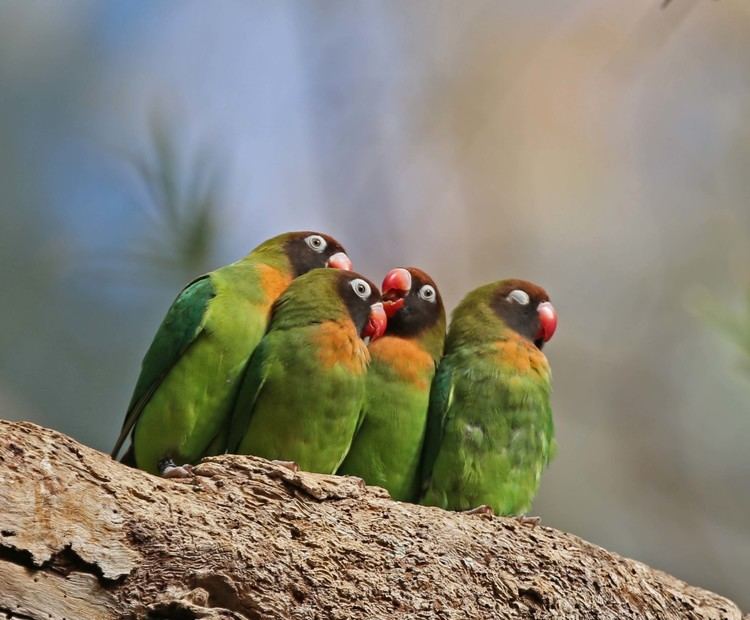Order Psittaciformes Scientific name Agapornis nigrigenis Rank Species | Phylum Chordata Superfamily Psittacoidea Subfamily Agapornithinae Higher classification Lovebird | |
Similar Lovebird, Bird, Yellow‑collared lovebird, Fischer's lovebird, Lilian's lovebird | ||
The black-cheeked lovebird (Agapornis nigrigenis) is a small parrot species of the lovebird genus. It is mainly green and has a brown head, red beak, and white eyerings. It is endemic in a relatively small range in southwest Zambia, where it is vulnerable to habitat loss.
Contents
Description

The black-cheeked lovebird is 14 cm (5.5 in) in length, with mostly green plumage, reddish-brown forehead and forecrown, brownish-black cheeks and throat, orange bib below the throat which fades to yellowish-green, white eye-rings and grey feet. Adult have bright red beaks, while juveniles of the species are similar but with a more orange bill. Vocalizations are loud, piercing shrieks, which are very similar to those of other lovebirds.
Taxonomy
The black-cheeked lovebird is monotypic. The black-cheeked lovebird is sometimes seen as a race of Lilian's lovebird.
Distribution and habitat

The black-cheeked lovebird inhabits deciduous woodland, where permanent supplies of surface water exist, as it needs daily access to water. In the dry season, these birds may congregate in large flocks of up to 800 or more.
It is listed as a vulnerable species since it has a small population which is in decline due to continuous habitat loss, particularly due to gradual desiccation of water bodies.
Diet

The black-cheeked lovebird feeds mainly at ground-level on annual grass seeds, but also on other vegetable matter and insect larvae, and on corn, sorghum, and millet.
Aviculture
The black-cheeked lovebird is relatively easy to breed in aviculture, but there was little interest in breeding them during the first half of the twentieth century at a time when imports were numerous. Now they are uncommon in aviculture and uncommon as pets.
